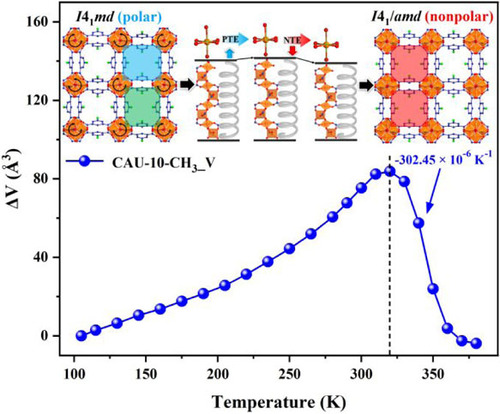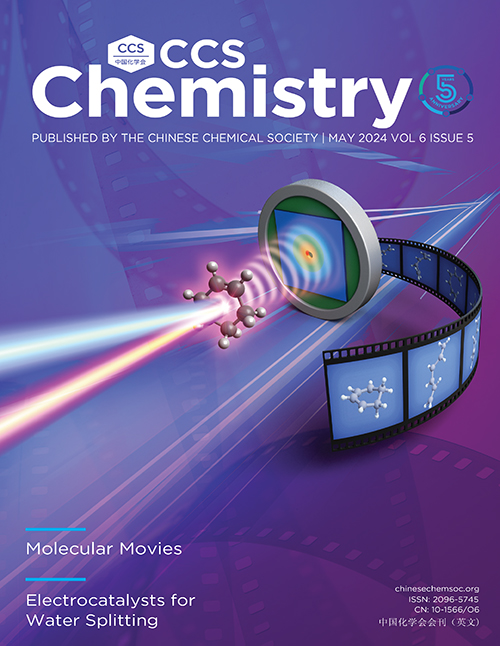Colossal Negative Thermal Expansion via Polar-Nonpolar Transition in Metal-Organic Frameworks
Molecular-based polar structures are one of most intriguing candidates to generate mechanical function such as ferroelectric. These structures undergo a symmetry switching on heating and generally yields anisotropic lattice variation. Volumetric negative thermal expansion (NTE) remains challenging to observed, and most of which exhibit relatively small magnitude as well. Herein, we realize on a colossal volumetric NTE in the metal-organic frameworks via novel polar-nonpolar structure transition. Intriguingly, a colossal volumetric NTE (αv = −302.45 × 10−6 K−1) was achieved from 320–380 K in CAU-10-CH3 due to polar-nonpolar transition (space group from I41md to I41/amd), much larger than most NTE MOFs. Variable-temperature crystallographic analysis reveals that the aluminum-oxygen octahedra turns from low symmetry to high symmetry on heating and thus causes a “spring” compression of the octahedral helical chain, thus leading to the colossal NTE. Functional groups modifications further identify the excellent tunability of such transition. The strongest uniaxial NTE, to date, was simultaneously found in CAU-10-H along c direction (αc = −577.22 × 10−6 K−1), whereas the CAU-10-NH2 contributes to a sluggish phase transition. This work provides the first example of tailoring a colossal NTE via polar-nonpolar transition in frameworks.


